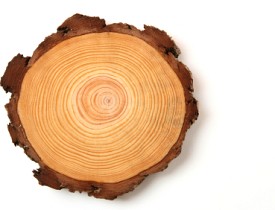Find Environmentally Friendly Wood

Sometimes all-wood products are defined as green because they’re more natural than plastics, which are petroleum-based. It's not that simple, though. There is such a thing as environmentally unfriendly wood. Buying it can help accelerate global climate change, threaten watersheds and other resources, and waste energy.
Instead, find certified sustainable wood from forests that are growing faster than they are being harvested. Also look for solid alternatives, locally sourced wood and reclaimed lumber.
Sustain Healthy Forests
In general, choose fast-growth species instead of endangered, old-growth wood. But making green choices is not just a question of opting for pine over teak. It's more important to know the source of your wood.
Forests sustain biodiversity, clean air, and fresh water. They also slow global climate change by soaking up carbon dioxide. If properly managed, almost any type of forest can thrive and regenerate while also providing lumber, paper and other products. However, the same forests can also be clear-cut for some quick income and profitable alternative uses.
Look for the FSC Logo
The Forest Stewardship Council (FSC) logo is the best and easiest way to make sure your wood is from properly managed forests that are growing back as fast as they are being thinned. The respected Council works in nearly 80 countries, certifying logging operations that maintain healthy forests and indigenous communities.
Build with Grass Instead
Another option avoids wood altogether. Bamboo, which is technically a grass, has received plenty of attention as a sustainable, versatile and strong alternative to wood. It grows about four times as quickly as most softwood trees. However, you must also make sure that any bamboo you use was sustainably sourced. The FSC doesn't certify bamboo forests. Instead, visit the International Network for Bamboo and Rattan for more information on finding sustainably sourced bamboo.
Reduce Transport Energy
One problem with bamboo is that shipping flooring and other bamboo products from its Asian sources requires plenty of energy – which produces heavy carbon emissions. An alternative is to look for wood building supplies and other products on the Sustainable Woods Network website. The group helps consumers find locally sourced wood in 12 American states. The products cut transport energy while also supporting local economies. Many of the suppliers are involved in old-growth forest restoration projects that help improve, rather than simply maintain, forested lands in the United States.
Reuse Wood
Finally, the best way to use old-growth hardwoods is to reuse the lumber. Reclaimed and salvaged wood is gaining popularity as homeowners look for sustainable options and a unique look. Take care when using salvaged wood. The imperfections of an old barn wall or wine cask add character and an antique aesthetic to the salvaged wood, but they also add problems. Salvaged wood may split easily and can have difficulty retaining fasteners.
Find Salvaged or Recycled Wood
Obtain local salvaged or recycled wood for your construction and remodeling projects at the Building Materials Reuse Association in your state. Then find an expert carpenter to bring your project to life.
Looking for a Pro? Call us (866) 441-6648

Carpentry Average Costs
Carpenters Experiences

Leaf Removal This Year, More Landscape Work Next Summer

Tree Removal So Fast And Efficient It Didn’t Even Wake Our Newborn



